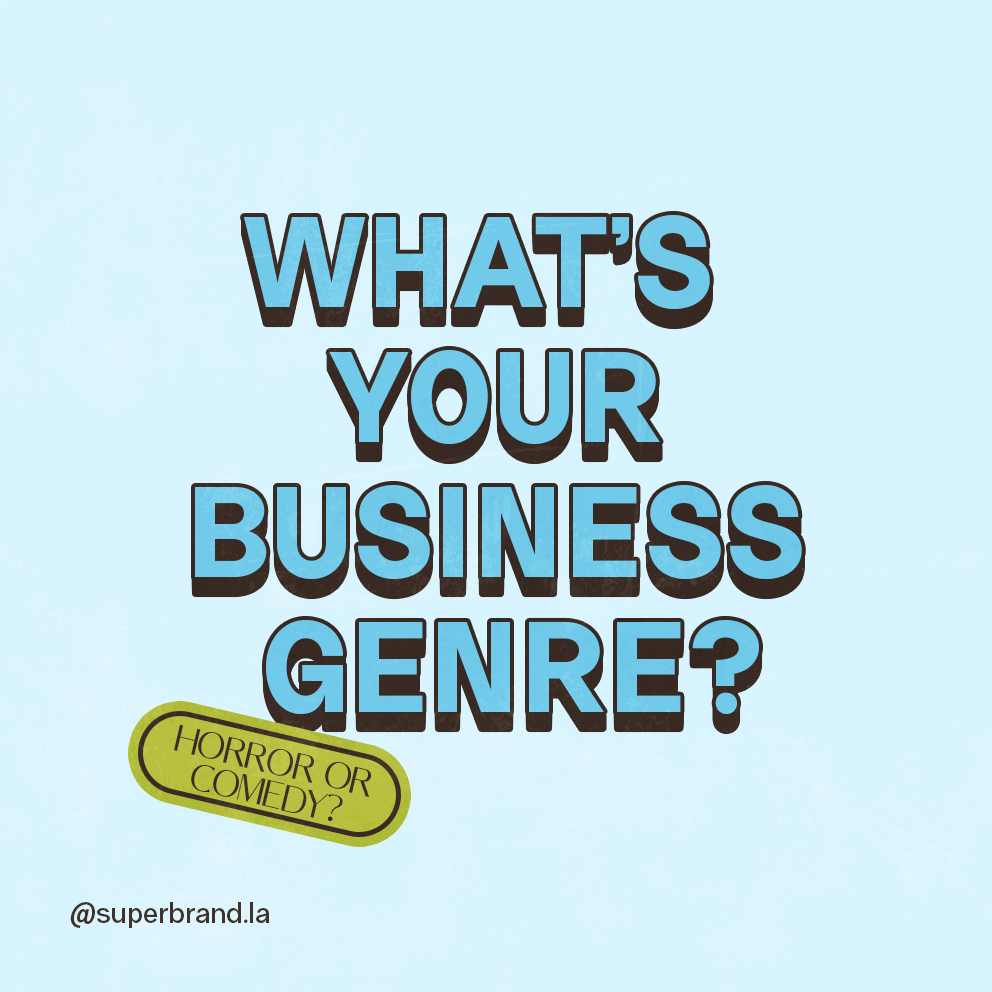
The idea of “genre” is something that’s come to us over the years, that’s so important to how we communicate, yet is totally underutilized in the business world.
We all know what genres are in reference to entertainment…music, movies, etc.
Scrolling through Netflix, HBO or any streaming service, you ask yourself, “What mood am I in for? Comedy, Horror, Action, Sci-Fi, Drama… Rom-com?”
Once you decide, you browse the movies in that genre and know how they’re going to make you feel.
Some will succeed better than others. But you know their intention and that, in some ways, is the most important thing.
The word “genre” which comes from the latin word “genus” (and was made way more sophisticated by the cultured French) simply means a way of categorizing things.
But for you, the Netflix browser, it’s a sign pointing toward an emotional result you’re interested in experiencing at the moment.
Branding and design can also work in genres – not the same genres we assign movies to, but genres nonetheless.
We’ve all encountered corporate branding for example – it’s often white and blue or green, with angular lines, and simple, clean text. Maybe a gradient or two.
Then you have Web 3 branding…Often seen in black with a pink and purple gradient and 3D objects floating all over the place. Lots of glowing text.
How about Sports branding? Primary colors, bold text with a lot of 3D treatments, graphic versions of animals and star shapes. Lots of stars.
When it comes to branding:
Skin care companies often create similar looking brands…
Sports teams do similar things…
As do computer companies
Saas startups
Gaming apps
Cryptocurrencies
Banks
Energy Companies
And so on…
Brand genres are everywhere! They communicate intention and we recognize them immediately. Sometimes, with only a few design cues, you know exactly what type of business you’re dealing with.
Branding is all about delivering a message quickly, efficiently and in a way that creates an emotional hook – so how do genres apply to your brand?
- Learn to recognize genres. To truly utilize the power of brand communication, you have to be able to understand the rules of a genre and how they play out. Begin by noticing the difference between how Sports brands communicate and how Computer companies communicate. Look at genres that are very different and learn what makes them different. Learn to read the nuances. Look at 10 websites in a single space and you’ll start to see where the similarities are.
- Know your particular genre. We’ve worked with clients who hadn’t taken the time to research what their market is doing when it comes to communication. Part of our work is to do that research for them, but if you don’t know your genre already, are you missing an opportunity to communicate something to your audience? Do some research around your particular market and notice what other brands are doing. You’ll quickly see what’s repeating, what seems to work, and what you might want to avoid.
- Break your genre. Just because you have a genre, doesn’t mean you have to stick to every rule that defines it. In fact, sticking to every rule of comedy makes a movie dull and predictable. A funny moment in a horror film breaks the tension and sets up the next scary moment. A violent moment in a comedy ups the ante on the plot. Don’t be afraid to come to the table with something new. With the right communication, you can break your genre without losing what’s recognizable about it. Remember the rule of surprise and delight. It works.
At the end of the day, you can really create whatever brand you want. But branding, at its core, is about communication. So having a starting point that you know works is a great way to communicate your intention. Then you can break expectations and do something different.
Just like all great movies, starting with a known genre is a great tool. Surprising your audience is the key to hooking them in.
Do you know what genre your brand fits into?
